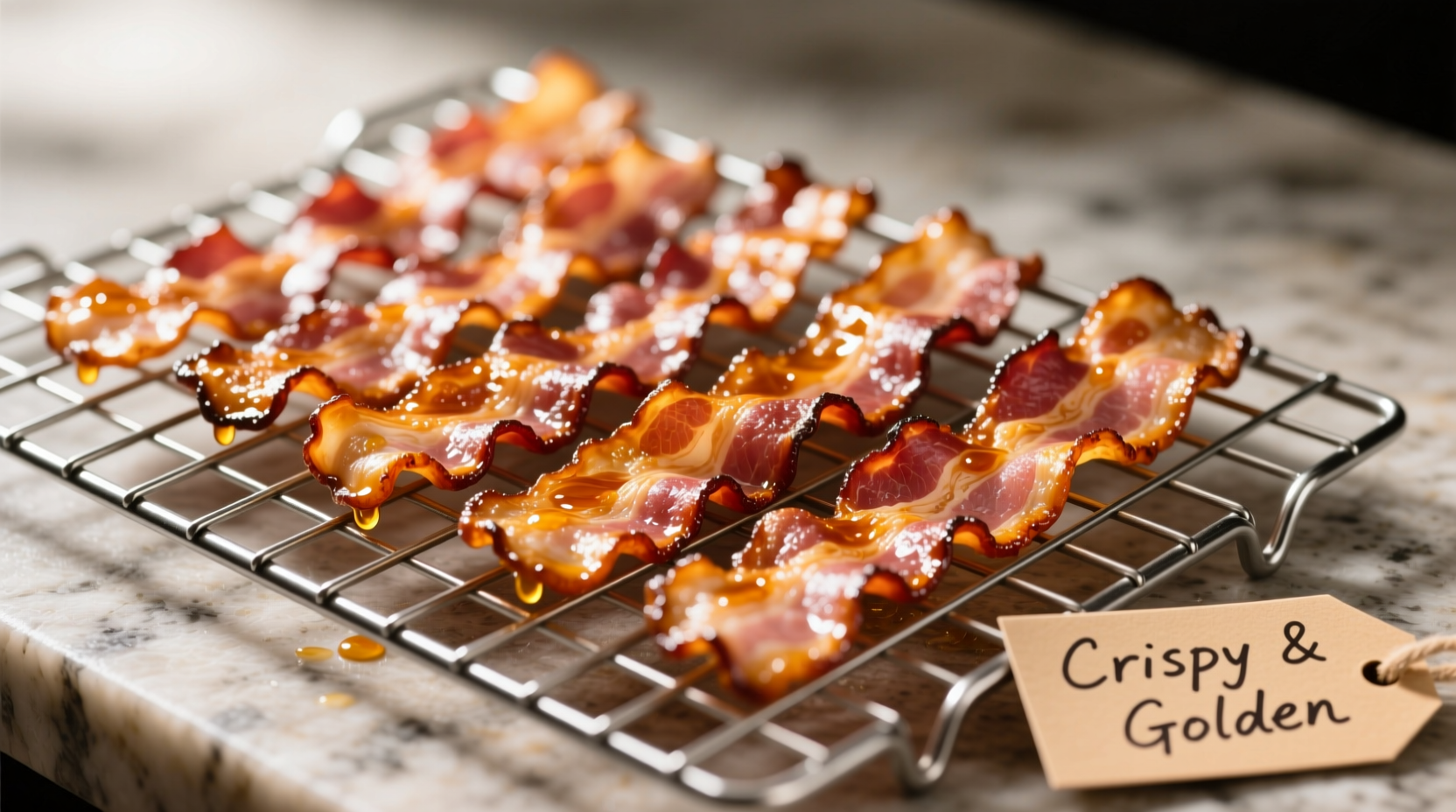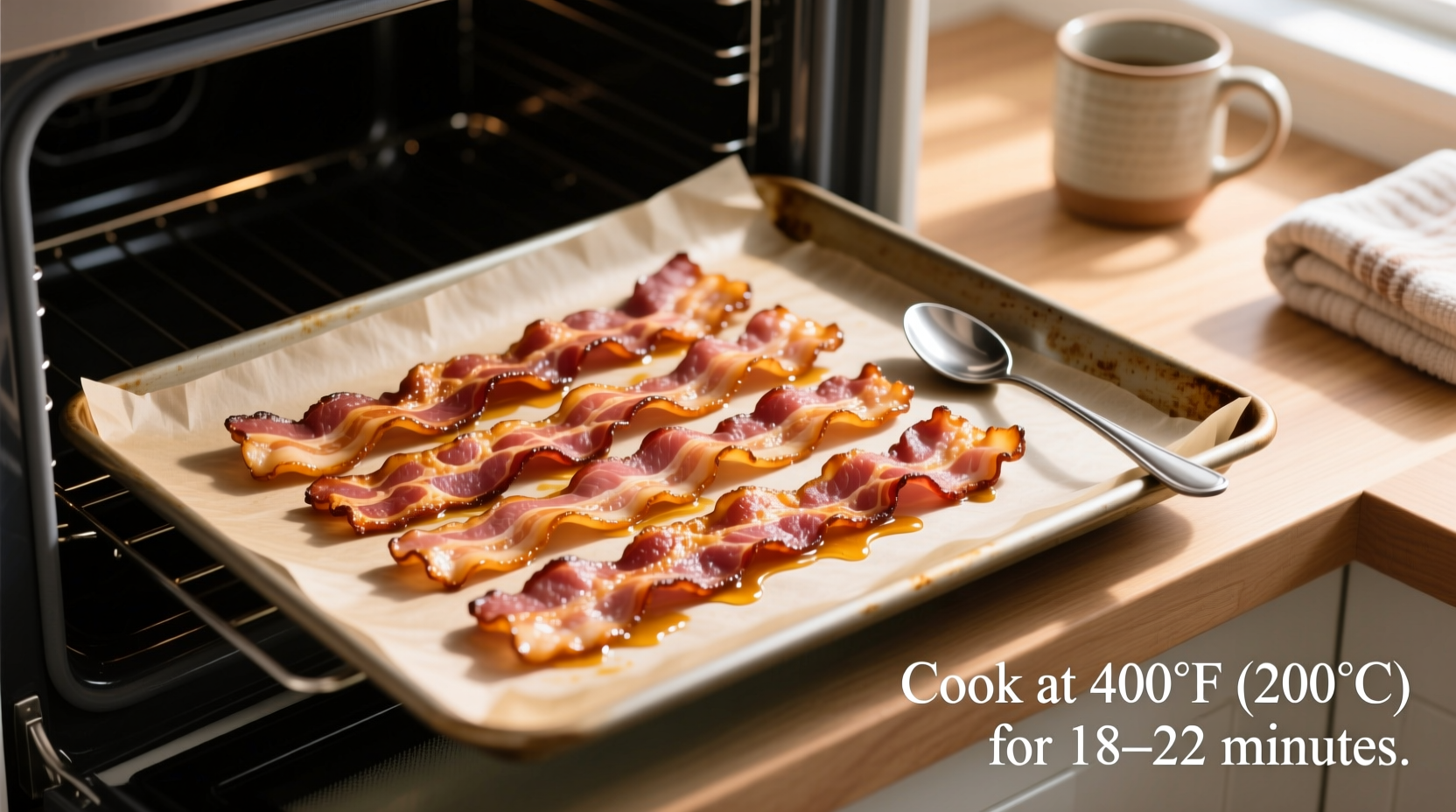Why Oven-Baked Bacon Beats Stovetop Every Time
Forget wrestling with sputtering grease on the stovetop. Professional chefs and home cooks alike have discovered that baking bacon in the oven transforms this breakfast staple into a clean, consistent, and hands-off cooking experience. Unlike pan-frying which requires constant attention and produces uneven results, the oven's radiant heat renders fat evenly while creating perfectly crisp strips without burning.
The Science Behind Perfect Oven Bacon
Understanding the chemistry of bacon cooking helps you master the technique. Bacon fat renders at approximately 300°F (149°C), but achieving that signature crispness requires reaching 400°F (204°C) where the Maillard reaction fully develops. This temperature sweet spot allows fat to render completely while the proteins brown without burning.
| Bacon Thickness | Recommended Time | Visual Doneness Cues |
|---|---|---|
| Regular cut (1/16") | 12-15 minutes | Golden edges, slightly curled |
| Thick cut (1/8") | 18-22 minutes | Deep golden brown, minimal curl |
| Pancetta or specialty cuts | 20-25 minutes | Deep caramel color, firm texture |
Step-by-Step: Your Foolproof Oven Bacon Method
Preparation Phase: Setting Up for Success
Start with a cold oven to prevent premature fat rendering. Line a rimmed baking sheet with aluminum foil for easy cleanup, then place a wire rack on top. Arrange bacon strips in a single layer without overlapping – this ensures even air circulation. For extra-crispy results, brush each strip lightly with maple syrup or sprinkle with black pepper before baking.
Cooking Phase: Precision Timing and Temperature
Preheat your oven to 400°F (204°C) – this temperature works consistently across gas, electric, and convection ovens. Place the baking sheet on the middle rack and set a timer for 15 minutes. Check at 12 minutes for regular-cut bacon or 18 minutes for thick-cut. The bacon should be bubbling vigorously with deep golden edges. For chewier bacon, remove at 12-14 minutes; for extra-crispy, continue up to 22 minutes.

Troubleshooting Common Oven Bacon Issues
Problem: Bacon sticks to the rack
Solution: Lightly spray the rack with cooking oil before adding bacon, or line the rack with parchment paper.
Problem: Excessive smoke during cooking
Solution: Reduce temperature to 375°F (190°C) and extend cooking time by 3-5 minutes. Ensure your oven is clean as residual grease can cause smoking.
Problem: Uneven cooking
Solution: Rotate the baking sheet 180 degrees halfway through cooking. For thick-cut bacon, flip strips gently at the 10-minute mark.
Advanced Techniques for Perfect Results
For restaurant-quality results, try these professional chef techniques. Place a second wire rack directly on top of the bacon to weigh it down – this prevents curling and ensures flat, even strips. To maximize flavor, add fresh thyme or rosemary sprigs to the baking sheet during the last 5 minutes of cooking. Save every drop of that precious bacon grease in a heat-safe container for future use in roasting vegetables or frying eggs.
When cooking multiple batches, maintain consistent results by letting your oven return to 400°F between batches. Never stack bacon – overcrowding creates steam that prevents proper crisping. For meal prep enthusiasts, fully cooked bacon can be stored in an airtight container in the refrigerator for up to 5 days or frozen for 3 months.
Temperature Variations Across Oven Types
While 400°F works universally, slight adjustments optimize results for different oven types. Convection ovens require reducing temperature by 25°F and checking 3-5 minutes earlier. Older gas ovens with hot spots benefit from rotating the pan midway through cooking. For toaster ovens, use the same temperature but reduce cooking time by 2-3 minutes due to closer proximity to heating elements.











 浙公网安备
33010002000092号
浙公网安备
33010002000092号 浙B2-20120091-4
浙B2-20120091-4